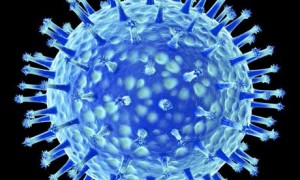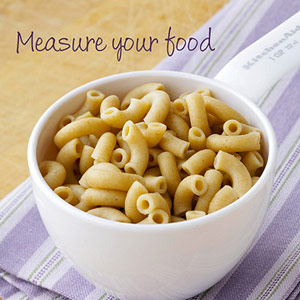June 21st, 2013 by Dr. Val Jones in Health Tips, Research
7 Comments »
 It is estimated that in seven years from now, half of all Americans will suffer from one or more chronic diseases, a majority of which are weight related. The American Medical Association recently declared that obesity itself is a disease. Obesity advocacy groups say that this move will lead to better health outcomes by providing more treatment options, preventative programs and education, as well as better reimbursement for treating individuals fighting obesity.
It is estimated that in seven years from now, half of all Americans will suffer from one or more chronic diseases, a majority of which are weight related. The American Medical Association recently declared that obesity itself is a disease. Obesity advocacy groups say that this move will lead to better health outcomes by providing more treatment options, preventative programs and education, as well as better reimbursement for treating individuals fighting obesity.
But what do patients need to know about weight loss? The good news is that a medically healthy weight does not require a very low percent body fat.
Weight loss for health – not for appearance – comes with a different (and in many cases much less demanding) set of recommendations. So for the purposes of this blog post, I’ll focus on key evidence-based advice for patients at risk for weight related disease…
1. You don’t need to lose that much weight to realize substantial health benefits.
A five to ten percent loss of body weight can lower risk for heart disease and other killers. For obese patients, even a modest weight reduction can have significant health benefits. An eleven pound reduction in weight leads to a fifty-eight percent decrease in the chance of developing diabetes. Even just losing two pounds reduces the risk of diabetes by sixteen percent.
2. Most people who succeed at losing weight (and keeping it off) do so with a combination of diet and exercise.
According to the National Weight Control Registry (NWCR) (a database of more than ten thousand Americans who have successfully kept at least 30 pounds off for a year or more):
- Ninety-eight percent of Registry participants report that they modified their food intake in some way to lose weight.
- Ninety-four percent increased their physical activity.
3. Walking is the most common form of exercise reported by successful weight loss subjects.
According to the NWCR, their study participants’ most frequently reported form of activity was walking. That’s not to say that other forms of activity (such as interval and strength training) aren’t an important part of a healthy lifestyle, but it is encouraging to know that brisk walking is a simple, affordable, and easily accessible place to start for most people.
4. Exercise itself (even without weight loss) is one of the most powerful preventive health interventions available.
Physical exercise has been shown to reduce blood pressure; decrease the risk for type 2 diabetes, strokes, certain types of cancer, and heart disease; improve arthritis symptoms and sleep disorders, and reduce erectile dysfunction, anxiety and depression. No pill or procedure can come close to providing all these amazing health benefits.
5. Diet is more important than exercise for shedding pounds of fat.
As I often tell my patients, “You can’t outrun your mouth.” Which means – you can eat far more calories in a short period of time than you can ever hope to burn with exercise. For this reason, diet plays a larger role in weight loss than exercise.
6. It’s more important to lose fat than to lose it by following a particular diet.
If diet is so important for losing weight, the next logical question is “Which diet is best?” Interestingly, the answer may be – whichever one you’ll stick to. Now, of course there are some diets that are more nutritionally sound than others – but the benefits of fat loss are so great, that health benefits are achieved even on relatively “unhealthy” diets. In a landmark diet comparison study, Michael Dansinger showed that study participants achieved similar benefits (such as improved cholesterol profiles, blood pressure, and inflammatory markers) from adhering to any of four vastly different diet regimes ranging from low fat, high carb to low carb, high fat.
7. The healthiest diets limit refined carbohydrate and animal fat intake, while maximizing fruit, vegetable, and healthy fats and protein.
I’ve just argued that a variety of diets work if you stick to them, and adherence is the key to fat loss, and even modest amounts of fat loss can have substantial health benefits. So does it really matter which diet you choose? In the long run, yes. Research has shown that there are some common nutritional principles that result in optimal health. The key ones are:
- Avoid refined carbohydrates as much as possible (such as sugar, fructose, and white flour/rice products). Unrefined carbs (such as whole grains, flax, oatmeal, brown rice, quinoa, berries, and cruciferous veggies) are an important part of a healthy diet.
- Avoid animal fats (trans fats). Healthy fats such as olive, fish and nut oils are preferable.
- Eat a diet rich in fiber, fruits and vegetables.
- Choose lean protein sources, including beans, eggs, chicken, fish, pork, yogurt, and fish.
- Limit alcohol intake and opt for water as your main source of hydration fluid.
8. Aim to lose 1 pound per week.
Cutting out approximately 500 calories from your daily caloric needs (established with a calorie calculator or by personal trial-and-error) is about as much as people can tolerate comfortably over periods of time. Diet adherence decreases as deficits exceed 500 calories per day.
9. The optimal, minimal amount of exercise for the average American adult is about one hour of moderate intensity exercise each day.
There is some disagreement on optimal exercise duration – some groups recommend half an hour per day (American College of Sports Medicine), others (such as the Institute of Medicine) a full hour. A review of the various positions and guidelines is available here. In terms of types of activity, there is general consensus that strength training twice a week should be added to moderate daily aerobic activity for best results.
10. You probably don’t need to take any vitamin or nutrition supplements.
Contrary to popular belief, most Americans (even with their sub-optimal eating habits) meet all of their basic dietary requirements with food intake. Non FDA-approved weight loss supplements have not been found to provide lasting benefits for weight loss and are generally ineffective and sometimes dangerous.
Weight loss drugs and surgical procedures may be effective last resorts for those who have failed to achieve results with diet and exercise. New prescription anti-obesity drugs and FDA-approved over-the-counter options are effective at helping patients shed extra pounds, but often come with unwanted side effects such as anal leakage and adverse cardiac events.
In conclusion, obesity underlies most of America’s chronic disease burden but can be reversed with modest weight loss through diet and exercise modifications. Patient adoption of long-term lifestyle changes are challenged by economic factors (e.g. healthy food “deserts” in inner cities), sedentary lifestyles, poor urban planning, excessive fast food and sugary beverage consumption, increasing portion sizes, and high tech conveniences that reduce energy expenditure, among other factors.
Patients are more likely to begin weight loss programs if recommended to do so by their physician, though studies suggest that they take advice more seriously if their physician is not overweight or obese herself. In our efforts to treat obesity, it may be especially important to lead by example.
September 10th, 2012 by Dr. Val Jones in Health Tips
1 Comment »
 One of my dear friends just came down with influenza, and she asked me for some advice. Top of mind questions included – When can I go back to work? And when will I get better? So in a nutshell, here’s what I told her (borrowing heavily from the CDC website):
One of my dear friends just came down with influenza, and she asked me for some advice. Top of mind questions included – When can I go back to work? And when will I get better? So in a nutshell, here’s what I told her (borrowing heavily from the CDC website):
- The most common flu symptoms are: Fever or feeling feverish/chills; Cough; Sore throat; Runny or stuffy nose; Muscle or body aches; Headaches; Fatigue (feeling very tired)
- Adults shed influenza virus from the day before symptoms begin through 5—10 days after illness onset. However, the amount of virus shed, and presumably infectivity, decreases rapidly by 3—5 days after onset.
- Most experts believe that flu viruses spread mainly by droplets made when people with flu cough, sneeze or talk. These droplets can land in the mouths or noses of people who are nearby. Less often, a person might also get flu by touching a surface or object that has flu virus on it and then touching their own mouth, eyes or possibly their nose.
- Uncomplicated influenza illness typically resolves after 3—7 days for the majority of persons, although cough and malaise can persist for >2 weeks.
- The 2011–12 U.S. seasonal influenza vaccine virus strains are identical to those contained in the 2010–11 vaccine. Annual vaccination is recommended even for those who received the vaccine for the previous season. Vaccination is the most effective prevention strategy available to reduce your risk of catching the flu.
My suggestions: Don’t go in to work (if you have the option) until 5 days after illness onset. If you go in earlier, you can wear a little face mask (and use Purell or other alcohol-based hand sanitizer) to prevent spread of the virus. Next year, get your flu shot early in the season.
As far as treatment is concerned, the
Mayo Clinic recommends: LIQUIDS, REST, and TYLENOL or IBUPROFEN for pain. No vitamins or supplements have been shown to shorten the course of the flu.
P.S. My suggestions are relevant for “garden variety” flu sufferers. If you are immuno-compromised, elderly, or otherwise in a high risk category, please
check out the CDC website for more information.
July 26th, 2012 by Dr. Val Jones in Health Tips, Opinion, True Stories
6 Comments »
 I was taken aback by a recent conversation I had with a gym owner. She is interested in encouraging middle-aged women to come to the gym for beginner-level fitness classes and was planning a strategy meeting for her staff and key clients. I asked if I could join and she said that I was expressly un-invited. Slightly miffed I asked why that was so – after all, I’m a rehab physician who has devoted my career to getting people moving.
I was taken aback by a recent conversation I had with a gym owner. She is interested in encouraging middle-aged women to come to the gym for beginner-level fitness classes and was planning a strategy meeting for her staff and key clients. I asked if I could join and she said that I was expressly un-invited. Slightly miffed I asked why that was so – after all, I’m a rehab physician who has devoted my career to getting people moving.
“You’re too advanced.” She said. “Beginners wouldn’t relate to the way you work out, we’re really more focused on creating a less intimidating environment for women.”
“You mean, like the Planet Fitness ads? The ones where athletes are not welcome?” I asked, confusedly.
“I don’t like those ads but the idea is the same. Beginners feel deflated by working out with people who are in far better shape. They don’t even want their instructor to look too fit.”
“You’re kidding me. Women would actually prefer working out with a chubby trainer?”
“Yes. In fact, I’ve had some women come to the gym and actually request NOT to be paired up with some of our personal trainers specifically because they look too fit. They are afraid they will be asked to work too hard, beyond their comfort zone.”
“So why are they coming to the gym in the first place?” I asked. “What is motivating them if they don’t want to work out hard or change their bodies in the direction of athletic-looking trainers?”
“They’re just interested in staying the way they’ve always been. Maybe they’ve started putting on weight after they hit their 40’s and 50’s and just want to get back to where they were in their 30’s. They’re not interested in running marathons or lifting the heaviest weights in the gym. They don’t want to be pushed too hard, and they prefer trainers who look healthy but not extreme.”
Medically speaking, it doesn’t take extreme effort to be healthy. Many studies have shown that regular walking is adequate to stave off certain diseases, and weight loss success stories (chronicled at the National Weight Control Registry for example) usually result from adherence to a calorie-restricted diet and engagement in moderate exercise.
In a sense, these women who “don’t want to work that hard” are right – they don’t have to perform extreme feats to be healthy. However, I am still fascinated by the preference for “average looking” trainers and the apparent bias against athleticism. This must be a fairly common bias, though, because national gym chains (like Planet Fitness) have picked up on it and made it the cornerstone of their marketing strategy. “No judgments” – except if you’ve got buns of steel, I guess.
When I choose a trainer I am looking for someone who embodies the best of what exercise can offer. An athlete who has practiced their craft through years of sweat and effort… because that’s my North Star. Sure, I may never arrive at the North Star myself, but I like to reach. And that’s what motivates me.
But for others, having a professional athlete for a trainer may be a mindset misfit. If your aspiration is to be healthy but not athletic, then it makes sense to find inspiration in those who embody that attitude and lifestyle. The important thing is that we all meet the minimum exercise requirements for optimum health. According to the CDC, that means:
* 2 hours and 30 minutes (150 minutes) of moderate-intensity aerobic activity (i.e., brisk walking) every week
and
* muscle-strengthening activities on 2 or more days a week that work all major muscle groups (legs, hips, back, abdomen, chest, shoulders, and arms).
How you get there, and with whom you arrive, is up to you. Chubby or steely – when it comes to health and fitness the best mantra is, “whatever works!”
June 22nd, 2012 by Dr. Val Jones in Health Tips, Opinion
10 Comments »
 I was raised by a health food zealot, and have been “eating clean” for most of my life. I have been an editor of a peer-reviewed nutrition and obesity journal, a food critic, and a dairy farmer. I am passionate about food – but I am also passionate about science. And I have to tell you, that for measurable health benefits, how much you eat is more important than what you eat.
I was raised by a health food zealot, and have been “eating clean” for most of my life. I have been an editor of a peer-reviewed nutrition and obesity journal, a food critic, and a dairy farmer. I am passionate about food – but I am also passionate about science. And I have to tell you, that for measurable health benefits, how much you eat is more important than what you eat.
I know this is controversial, and I’m certainly not saying that we should throw out all our leafy green veggies and grilled chicken and chow down on a diet of Twinkies and beer. But what I am saying is that the relative importance of food volume versus food quality has been misrepresented. We are focusing too much on specific nutrients and not enough on total caloric intake. I’d guess that what we eat is about 10% of the obesity problem, and how much we eat is 90% of the problem, but we spend 90% of our time talking about changing and improving what we eat rather than portion control strategies.
Consider these research-based findings :
1. The CDC has determined that 90% Americans get all the nutrients they need from the food they eat. Even “crappy” US diets actually do provide the minimum nutrients needed to avoid disease and malnutrition. I know this is surprising, but vitamins and supplements are simply not needed by most people.
2. Measurable health benefits occur from weight loss as small as 5-10% of total body weight. You don’t need to be a bikini model to achieve the health benefits of weight loss. You can decrease your blood pressure, sugar, and cholesterol with modest weight losses. In my opinion, leanness under about 25% body fat (for women) is mostly an aesthetic choice, not one of medical necessity.
3. Exercise benefits are largest at minimal levels. Going from sedentary to slightly active provides a larger health benefit than all additional increments of exercise. Thirty minutes of exercise, five times a week, is the minimum bar set by the Department of Health and Human Services. Anything beyond that is still valuable, but doesn’t decrease health risks by as much.
4. It matters more to lose weight, than it matters how you do it. Head-to-head studies of one diet versus another have repeatedly shown minimal differences in health benefits between the diet groups. The benefits occur from the weight loss, not from the manner in which it was lost.
This is all good news. Americans can achieve healthier outcomes with less effort than generally believed. Regular exercise, and a calorie-controlled diet (rather than rigidly controlling the macro and micro nutrients) are all that is required to substantially reduce the risk of many costly and unpleasant diseases. If you want to further optimize your health by eating a diet rich in fruits and veggies, whole grains, low-fat dairy, healthy fats, and lean protein please do so! But better to be a normal weight than obese due to eating too much of that healthy diet.
The bottom line is that you don’t have to give up eating the things you like, you just have to eat less of them. Even Olympian Carmelita Jeter eats Hostess cup cakes occasionally. And she’s the fastest woman in the world!
P.S. This blog post was inspired by a Twitter conversation with @Judith_Graham who said that the complicated issue of what to eat was too difficult to address in 140 character exchanges. Thank you, Judith!
P.P.S. Also, I’ve been thinking a lot about well-meaning but misguided (IMO) health policy issues raised by mayor Bloomberg’s ban on Big Gulps and the AMA’s endorsement of soda taxes. Bloomberg was pointing in the right direction (the size of the soda, not the soda itself was the problem), but I don’t believe you can regulate good behavior. Education and personal responsibility are the way to go.
December 26th, 2011 by RyanDuBosar in Health Tips
No Comments »

Health care facilities should consider mandatory flu vaccinations for their employees if other attempts don’t increase rates to 90%, a draft statement from a U.S. Department of Health and Human Services (HHS) working group stated.
All public health services, HHS staff and Federally Qualified Health Centers should follow suit, stated the Health Care Personnel Influenza Vaccination Subgroup in draft recommendations.
The working group released five steps to boost vaccination rates:
–Employers should establish comprehensive flu infection prevention programs as recommended by the Centers for Disease Control and Prevention (CDC) to achieve the Healthy People 2020 influenza vaccine coverage goal of 90%.
–Employers should integrate flu vaccination programs into their existing infection prevention programs.
–HHS should encourage CDC and the Centers for Medicare and Medicaid Services to standardize the methodology used to measure Read more »
*This blog post was originally published at ACP Internist*
 It is estimated that in seven years from now, half of all Americans will suffer from one or more chronic diseases, a majority of which are weight related. The American Medical Association recently declared that obesity itself is a disease. Obesity advocacy groups say that this move will lead to better health outcomes by providing more treatment options, preventative programs and education, as well as better reimbursement for treating individuals fighting obesity.
It is estimated that in seven years from now, half of all Americans will suffer from one or more chronic diseases, a majority of which are weight related. The American Medical Association recently declared that obesity itself is a disease. Obesity advocacy groups say that this move will lead to better health outcomes by providing more treatment options, preventative programs and education, as well as better reimbursement for treating individuals fighting obesity.

 One of my dear friends just came down with influenza, and she asked me for some advice. Top of mind questions included – When can I go back to work? And when will I get better? So in a nutshell, here’s what I told her (borrowing heavily from the
One of my dear friends just came down with influenza, and she asked me for some advice. Top of mind questions included – When can I go back to work? And when will I get better? So in a nutshell, here’s what I told her (borrowing heavily from the  I was taken aback by a recent conversation I had with a gym owner. She is interested in encouraging middle-aged women to come to the gym for beginner-level fitness classes and was planning a strategy meeting for her staff and key clients. I asked if I could join and she said that I was expressly un-invited. Slightly miffed I asked why that was so – after all, I’m a rehab physician who has devoted my career to getting people moving.
I was taken aback by a recent conversation I had with a gym owner. She is interested in encouraging middle-aged women to come to the gym for beginner-level fitness classes and was planning a strategy meeting for her staff and key clients. I asked if I could join and she said that I was expressly un-invited. Slightly miffed I asked why that was so – after all, I’m a rehab physician who has devoted my career to getting people moving. I was raised by a health food zealot, and have been “eating clean” for most of my life. I have been an editor of a peer-reviewed nutrition and obesity journal, a food critic, and a dairy farmer. I am passionate about food – but I am also passionate about science. And I have to tell you, that for measurable health benefits, how much you eat is more important than what you eat.
I was raised by a health food zealot, and have been “eating clean” for most of my life. I have been an editor of a peer-reviewed nutrition and obesity journal, a food critic, and a dairy farmer. I am passionate about food – but I am also passionate about science. And I have to tell you, that for measurable health benefits, how much you eat is more important than what you eat.








